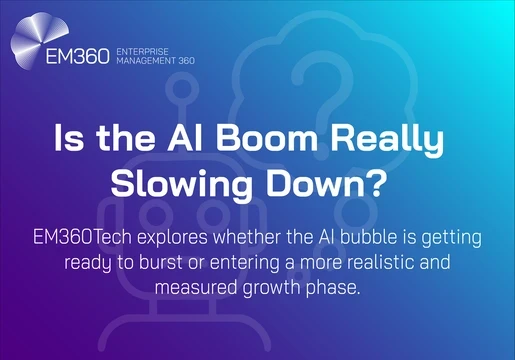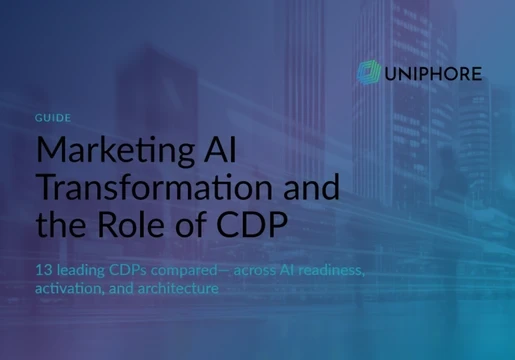What must a team have for smarter, faster, more personalized apps today? The answer now points to AI in app development. Across industries, developers rely on AI for higher performance and for a new model of app behavior, adaptation, and evolution. The shift is clear. AI in mobile apps now moves from simple automation toward multimodal input, predictive UX, and on-device decisions. Examples include voice-enabled bank features and adaptive fitness dashboards. AI-driven apps already change what users expect and what developers must deliver. This article explains the AI app trends that shape development in 2025. It shows where AI creates real value, how it redefines the product life cycle.

The rise of AI in app development
AI now serves as the engine behind many of the most successful and widely adopted mobile applications. Its role extends far beyond basic automation or predictive logic. Today’s mobile apps use AI to reason in real time, adjust to shifting user behavior, and optimize performance with minimal human oversight. This shift signals a deeper change in how digital products are designed and maintained.
According to Gartner, more than 80% of mobile apps will embed AI capabilities by the end of 2025. This statistic reflects the growing pressure on generative AI app development company to deliver intelligent systems that can personalize content, optimize backend operations, and scale behavioral insights across millions of users. As demand for real-time services grows, AI becomes the only viable path for meeting diverse user needs without inflating operational costs.
Product decisions no longer rely entirely on static personas or quarterly research. AI surfaces real-time signals about user intent, friction points, and unmet needs, giving teams the flexibility to iterate faster and with greater accuracy. As mobile experiences grow more contextual, continuous adaptation becomes important. AI empowers developers and product managers to deliver that adaptability without rebuilding workflows or pushing constant updates.
Core AI app trends to watch in 2025
AI is no longer a side feature, it now defines how mobile apps function, adapt, and deliver value. It’s used almost everywhere, from casual users’ phones to recent space missions. In 2025, developers face a wave of fast-moving innovation that centers on AI app trends that shape user behavior and technical design. These trends push far beyond chatbots or recommendation engines, they affect how apps interact, reason, and evolve. Teams that focus on AI-first workflows and infrastructure now set the pace for user engagement and long-term growth.
Source: napkin.ai
1. On-device AI and privacy-centric design
Developers now prioritize local inference. Powered by TensorFlow Lite, Core ML, and Edge TPU, apps run AI models directly on smartphones. This shift improves latency, cuts bandwidth costs, and reduces privacy risks. Health, finance, and education apps especially benefit from this model, which allows them to process sensitive data without relying on cloud servers. It also provides a key functionality during offline sessions, something cloud-only apps cannot guarantee. Apple and Google continue to invest in neural acceleration hardware, which widens access to advanced AI for developers at every skill level.
2. Multimodal interaction becomes default
Modern apps no longer rely on one input type. Multimodal AI blends voice, touch, camera, and environmental signals. A travel app, for example, might let users scan a landmark, ask for its history by voice, and save the location with a swipe. These experiences feel intuitive because AI bridges sensory data into coherent workflows. The ability to fuse visual recognition, NLP, and behavioral context in real time creates more immersive and assistive user journeys. As models like Gemini and GPT-4o support multimodal inputs by design, developers gain more flexibility when building feature-rich apps.
3. Generative UI and adaptive layouts
AI now adjusts mobile interfaces in real time. Instead of static layouts, apps generate context-aware screens based on user roles or usage patterns. In e-commerce, an app might rewrite product descriptions for returning vs first-time users. In B2B platforms, dashboards reshape themselves depending on team roles. These dynamic views rely on component-based design and embedded model logic. Custom app development companies can now train lightweight models to respond to interaction patterns and prioritize UI elements that drive engagement. This AI app trend pushes design beyond fixed templates toward systems that evolve with each user.
4. Intent-based navigation
Navigation flows no longer require deep menu trees. AI models detect patterns and context like time of day, location, or recent actions, to surface the next likely user need. For example, a productivity app might preload a meeting summary at 9 AM without any prompt. The result is a seamless experience that responds faster than traditional UI logic. This reduces friction and helps new users complete tasks without memorizing menu structures. As behavioral intent detection improves, apps will begin to mirror human assistance and offer value before users even ask.
5. Embedded real-time NLP and translation
Natural language processing now runs locally or on optimized cloud endpoints. Apps translate languages, analyze tone, and extract user intent without delay. For global apps in commerce, travel, or education, real-time translation expands reach and improves accessibility. Transformer-based models now handle these tasks on-device with surprising accuracy. As a result, language barriers shrink and voice-first UX becomes more natural in fast-moving mobile contexts. This shift also reduces reliance on third-party translation APIs and helps preserve privacy during sensitive communication.
These AI app trends will continue to define which apps thrive in 2025. Teams that adopt them early gain a technical advantage and deliver user experiences that feel natural, fast, and intelligent by design. AI in app development is no longer experimental; it’s strategic, and those who delay adoption risk falling behind as user expectations continue to evolve.
Challenges and considerations for AI integration
AI brings powerful capabilities to mobile apps, but integrating it into live products comes with trade-offs. The same systems that personalize content, automate interactions, and drive engagement also introduce new points of failure. From model reliability to regulatory pressure, each layer of AI functionality demands decisions that affect user trust, product stability, and long-term scalability. Developers can no longer treat AI features as isolated tools, they must build for dynamic behavior, privacy requirements, and continuous learning from the start.
Source: napkin.ai
- One of the biggest issues in production AI systems is model drift, when predictions no longer reflect current user behavior. On-device models are especially vulnerable, since they often run without real-time updates. Without a refresh cycle or a federated learning strategy, even a well-trained model may degrade over time. Developers need to schedule model versioning, monitor performance, and test compatibility with OS and device updates to keep predictions accurate and relevant.
- AI-powered personalization can improve user engagement, but it also risks reinforcing patterns. For example, a health app that favors the majority demographics may overlook users with different goals or accessibility needs. To address this, teams should audit training datasets, add override settings for users, and test features across diverse profiles.
- AI in app development depends on data, but collecting and processing that data raises compliance challenges. With strict regulations like GDPR and CCPA, teams must secure user consent, minimize data exposure, and store model outputs safely on-device or in the cloud. Features that combine telemetry, location, and usage behavior can create sensitive user profiles.
- AI models on smartphones strain the CPU, GPU, and battery. Tasks like real-time translation, gesture recognition, or image segmentation may interrupt other key processes. Lightweight model architectures help, but teams also need smart load management and fallback behavior.
- AI systems produce non-deterministic outputs that break traditional test workflows. Instead of binary pass/fail checks, teams validate performance with simulations, confidence intervals, and behavioral analytics. Continuous oversight in production becomes important to detect drift, regressions, or unintended behavior. Rollouts for AI logic may require separate model governance, especially when updates ship through server-side endpoints rather than full app releases.
The promise of artificial intelligence in mobile applications remains strong, but successful integration depends on more than model accuracy. Developers must account for evolving behavior, ethical boundaries, and practical limitations of mobile environments. Teams that address these challenges directly can build smarter apps without losing sight of safety, trust, or performance.
Conclusion
AI now stands at the center of mobile app development, not as a plugin or feature set, but as the structure that supports real-time adaptability, personalization, and decision-making. In 2025, the most competitive apps no longer follow static flows or fixed interfaces. They evolve alongside users, adjust based on context, and refine performance through continuous learning. Teams that treat AI as core infrastructure rather than a late-stage improvement gain more than just technical innovation; they gain long-term user relevance, faster release cycles, and sharper alignment between product and behavior. As users demand faster, smarter, and more intuitive apps, AI remains the only path that meets those expectations at scale
FAQ
What industries benefit most from AI and mobile apps?
Industries that rely on real-time data, personalized user experiences, or automation see the strongest gains from AI-powered mobile apps. In healthcare, AI enables remote monitoring, diagnostic assistance, and adaptive wellness tracking. Finance apps use predictive models for fraud detection, spending insights, and risk analysis. Retail and e-commerce rely on AI for product recommendations, inventory optimization, and conversational shopping. Education, logistics, and travel also benefit from AI mobile workflows that improve speed, accuracy, and user engagement across devices.
What AI tools help developers build better apps?
Developers rely on a mix of on-device and cloud tools that add AI features to mobile apps. TensorFlow Lite and Core ML run local inference on Android and iOS, and they support object detection, speech analysis, and gesture recognition. ML Kit handles common tasks such as text scans and face detection. On the cloud side, Firebase ML, Google Vertex AI, and OpenAI APIs expose powerful models for natural-language tasks, translation, and content generation. These tools shorten development cycles and make applications smarter and more responsive.
Can AI personalize mobile apps at scale?
Yes, AI can deliver personalized experiences across millions of users simultaneously. Machine learning models analyze behavior patterns, such as browsing history, in-app actions, device signals, interface layouts, and recommendations. Because these models adapt in real time, they continuously refine what each user sees and interacts with. This allows apps to serve highly specific user needs. As a result, personalization no longer requires manual segmentation, it becomes a dynamic system that scales automatically with usage.
Is AI integration in mobile apps very expensive?
Costs vary depending on scope, but integrating AI does not always require deep ML expertise or large budgets. Lightweight models, pre-trained APIs, and low-code platforms lower the barrier. The biggest cost is often operational, including governance, monitoring, and data management, rather than model development itself. Teams must also account for the added complexity in testing, deployment, and regulatory compliance. However, when implemented strategically, AI features often deliver long-term gains that outweigh the initial investment.







Comments ( 0 )